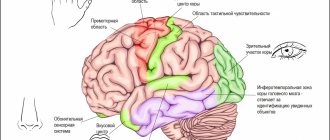Preface
The textbook examines issues of the etiology and pathogenesis of stuttering from the standpoint of modern achievements of psychophysiology, psychology and correctional pedagogy; the clinical and psychological-pedagogical characteristics of neurotic and neurosis-like forms of stuttering are analyzed in detail; modern ideas about the rehabilitation of people who stutter are outlined; for the first time, speech therapy technologies for the formation of fluent speech in people who stutter are presented in an integrative manner; Methodological developments are given for organizing the educational process with students and practitioners mastering this section of speech therapy. The book presents the author's position on the problem of stuttering.
The book is intended for students of defectology faculties, speech therapists, psychologists, and doctors.
This book is intended for students of defectology departments of pedagogical institutes and speech therapists. It is aimed at improving the training of teaching staff and speech therapy assistance to people who stutter. The material in the book corresponds to the program and curriculum for the speech therapy department of defectology faculties.
Currently, stuttering is one of the most pressing problems in speech therapy. It is recognized throughout the world that stuttering is a complex problem in both theoretical and practical aspects. The problem of stuttering has been intensively studied and covered in the literature throughout the 20th century. The scientific development of the problem of stuttering in domestic speech therapy is associated with the names of famous psychiatrists I.A. Sikorsky, N.G. Netkachev and V.A. Gilyarovsky.
Currently, interest in the problem does not decrease; moreover, since 1994, International symposiums dedicated only to the problem of stuttering have been regularly held. These scientific congresses bring together more than a thousand scientists from countries around the world. The international special magazine “Fluen y Disorders” is regularly published, which is also dedicated to this monoproblem. The enormous interest of scientists around the world in the problem of stuttering indicates its relevance.
In domestic speech therapy, an original approach to assessing the clinical picture of stuttering has been developed. Identification of two clinical forms of stuttering - neurotic and neurosis-like - allows us to most fully assess not only convulsive manifestations in the speech of people who stutter, but also personality characteristics both in the initial period of development of stuttering and during its chronicification. In addition to convulsive stuttering, stuttering includes disorders of higher nervous activity, associated in some cases with organic damage to the central nervous system, in other cases with a neurotic reaction. The chronification of the process observed during stuttering usually causes secondary neurotization as a personality reaction to the underlying disease, which makes stuttering a complex pathological process that can accompany a person throughout his life.
Currently, a speech therapist is required not only to know practical techniques for correcting speech for stuttering, but also to understand the holistic clinical and psychological-pedagogical picture of this complex pathological condition, as well as knowledge of the clinical manifestations of neurotic and neurosis-like conditions. Only under this condition can psychophysiological, psychological and psychological-pedagogical data on people who stutter be correctly interpreted, which determines the direction of rehabilitation as well as preventive measures.
This book is an attempt to highlight various aspects of the study of stuttering that are relevant for broad speech therapy practice. In their presentation, the authors rely not only on literature data, but also on the results of many years of research conducted in the “Laboratory of Speech Pathology” of the All-Russian Research Institute named after. V.P. Serbsky and at the Department of Speech Therapy of Moscow Pedagogical State University.
The structure and arrangement of the four chapters of the book corresponds to its main task - to facilitate students' assimilation of the curriculum for the course “Stuttering”.
The first chapter of the textbook “Basic mechanisms of oral speech” gives ideas about its anatomical and physiological mechanisms. A brief description of the respiratory, phonatory and articulatory sections of the peripheral speech apparatus is given; the main structures of the central nervous system and their functions that ensure speech activity are presented; The acoustic characteristics of oral speech are given, which, as a rule, are disturbed when stuttering.
Modern ideas about the systemic organization of speech are presented through a description of the functional system of the speech motor act. Analysis of the violation of the action program (oral speech) through the prism of ideas about the functional system makes it possible to identify the pathogenesis link that leads to stuttering.
The same chapter describes age-related features of the functional system of oral speech. It substantiates the age-related instability of speech motor stereotypes in preschool age and explains the reasons for the selective fragility of the speech system under the influence of various harmful factors.
Chapter two is devoted to stuttering itself: its phenomenology, etiology, clinical and psychological-pedagogical characteristics of stutterers with neurotic and neurosis-like forms of stuttering.
Today, many specialists working in the field of stuttering believe that successful practical work on the rehabilitation of stutterers is hardly possible without careful clinical and psychological-pedagogical differentiation of stutterers. This chapter highlights the most relevant issues of differential diagnosis for broad speech therapy practice. This chapter also presents an analysis of stuttering from a psycholinguistic perspective, since such an analysis makes it possible to consider in a single complex the violation of the speech process during stuttering from the concept to the motor implementation of the utterance. At the end of the chapter, a modern view of some pathogenetic mechanisms of stuttering is given with the rationale for the main directions of corrective action for different forms of stuttering.
The third chapter is devoted to the main directions of comprehensive psychological and pedagogical rehabilitation of people who stutter. It reveals the main content of the tasks of speech therapy work. In this regard, a number of speech therapy technologies are covered in detail: inhibition of pathological speech motor stereotypes; regulation of emotional state; development of the body's motor systems; formation of speech breathing, skills of rational vocal delivery and vocal performance; development of the prosodic side of speech; development of the planning function of speech. Speech therapy technologies are revealed through the content of specific techniques and exercises.
This chapter covers in detail the issues of psychological and pedagogical examination of stutterers of different ages, and also presents various author’s systems of complex psychological and pedagogical influences (Vlasova N.A., Pay E.F., Seliverstov V.I., Cheveleva N.A. , Mironova S.A., Andronova L.3., Nekrasova Yu.B., Shklovsky V.M., etc.). The chapter ends with a description of stuttering prevention methods.
Chapter four is devoted to the organization of the educational process in the “Stuttering” course, which will allow both students and teachers to optimize the educational process on this problem.
The textbook on the section of speech therapy “Stuttering” ends with material that reflects various aspects of practical work with people who stutter.
The textbook is intended for students of defectology faculties, speech therapists, psychologists and doctors.
L. Belyakova E. Dyakova
March, 1998 Moscow
Speech classes
Speech classes are built in the form of conversations, viewing didactic materials, filmstrips, and working on crafts.
During classes you should use books, toys, and board games. At the same time, parents should monitor their children’s speech, help them express their thoughts correctly, without focusing on the speech defect. Speech classes should be conducted regularly and in accordance with the principle from simple to complex, from familiar to unfamiliar. From the simplest situational forms to a detailed statement - this is the way to overcome stuttering. This is a very difficult task, and success here accompanies those parents who are not stopped by the first failures.
Typically, overcoming stuttering in preschoolers at home takes 3-4 months. All this time you need to be close to the child and “live” with him all the stages of speech re-education. Never give up hope of improving your stuttering. Remember: stuttering is a removable disease.
The course of overcoming stuttering is conventionally divided into three periods: preparatory, training, consolidative.
Preparation period
This period includes medical, recreational and protective measures: visiting a doctor, speech therapist, organizing a work and rest regime. At this time, it is necessary to limit the speech communication of a stuttering child with other children. Family members should carefully ensure that their own speech is clear, expressive and unhurried. It is necessary to draw up a plan for working with your child every day and make notes on its implementation. They have casual conversations with the child about how together (with mom and dad) he will learn to speak correctly and beautifully, and tell interesting fairy tales or stories. At the same time, play a children's record for your child or let him listen to a tape recording of the fairy tales “Teremok”, “Kolobok”, “Three Bears” and others. Games, drawing, and modeling help to prepare him for the upcoming speech work. Practice correct speech while walking and playing outdoors.
During the preparatory period, simple speech classes are organized - three to four times a day, lasting 10-15 minutes each. It is better to start classes with speech exercises. The child is asked to count to five, to ten, and then, following his parents, say short phrases: “I am learning to speak slowly.” "I'm learning to speak loudly."
Excerpts from children's poems can serve as material for speech exercises. The purpose of speech exercises is to prepare the child for the upcoming lesson, to make him feel that he can speak correctly. It is important that during a conversation the child does not tense up, does not raise his shoulders, and breathes silently and calmly.
After exercise, speech classes begin, which consist of special exercises that normalize speech. Speech exercises are built in a certain sequence - from simple forms of speech to complex ones.
Conjugate speech is the easiest for children who stutter. The child and his parents simultaneously name the objects shown in the pictures, the letters of the alphabet, speak short phrases (based on the pictures), and recite poetry. The training method is quite simple. While looking at the picture, at the same time as your child, smoothly and leisurely say: “This is Mishka. The bear is bathing. Mishka has big paws."
You can take any toy and tell what parts it consists of: “This is a Lena doll. Lena has eyes, a mouth, a nose. Lena has a new dress and white shoes.” Seeing objects in front of him, the child expresses his thoughts easier and more confidently.
The lesson can end with playing lotto with pictures or reading a poem. As soon as the child is fluent in conjugate speech, move on to the next form of speech.
Reflected speech is a more complex form that allows storytelling based on objects, pictures, toys. The parents say the phrase, the child repeats: “I have a pencil.” "I'm drawing". “Once upon a time there was a goat, and she had seven kids.” With children it is advisable to recite “Teremok”, “Kolobok”, M. Prishvin’s story “The Brave Hedgehog”, A. Barto’s poems “Bunny”, “Bear”. With older preschoolers you need to learn the alphabet, and you should also teach them to read and write using the ABC.
During this period, exercises for coordinating words with movement are introduced. March in a circle with your child: “We learned to count: one, two, three, four, five.” And so three times. Or another exercise. Give your child a ball and count each time the ball is thrown on the floor. The lesson ends with a speech board game. For example, you can prepare any subject lotto. Show your child the picture and calmly say: “I have a squirrel.” Then you just show the picture and the child names it.
This is a schematic lesson plan for the education of the reflected form of speech, based on which you can create subsequent lessons yourself.
During this period, learn N. Naydenova’s poem “Spring” with your child. Use days of the week, months, seasons of the year as speech exercises. If your child reads, choose folk tales and interesting poems for him.
After two or three lessons, the child himself begins to be active and confidently repeats the text, willingly plays, throws the ball up, hits the floor or wall. The movement is accompanied by words. Counting rhymes, jokes, and riddles are especially convenient for such exercises (they can be found in the magazines “Funny Pictures” and “Murzilka”).
This concludes the preparatory period. Its duration may vary depending on the success of mastering the conjugate-reflective form of speech. Fluency in them provides the basis for the transition to the next period - training. There are often cases when, already at the initial stage, certain forms of stuttering (especially mild ones) are successfully overcome. For preventive purposes, classes should be continued. However, the daily routine and gentle regime should remain the same. After a month, the child can be taken to a regular kindergarten.







